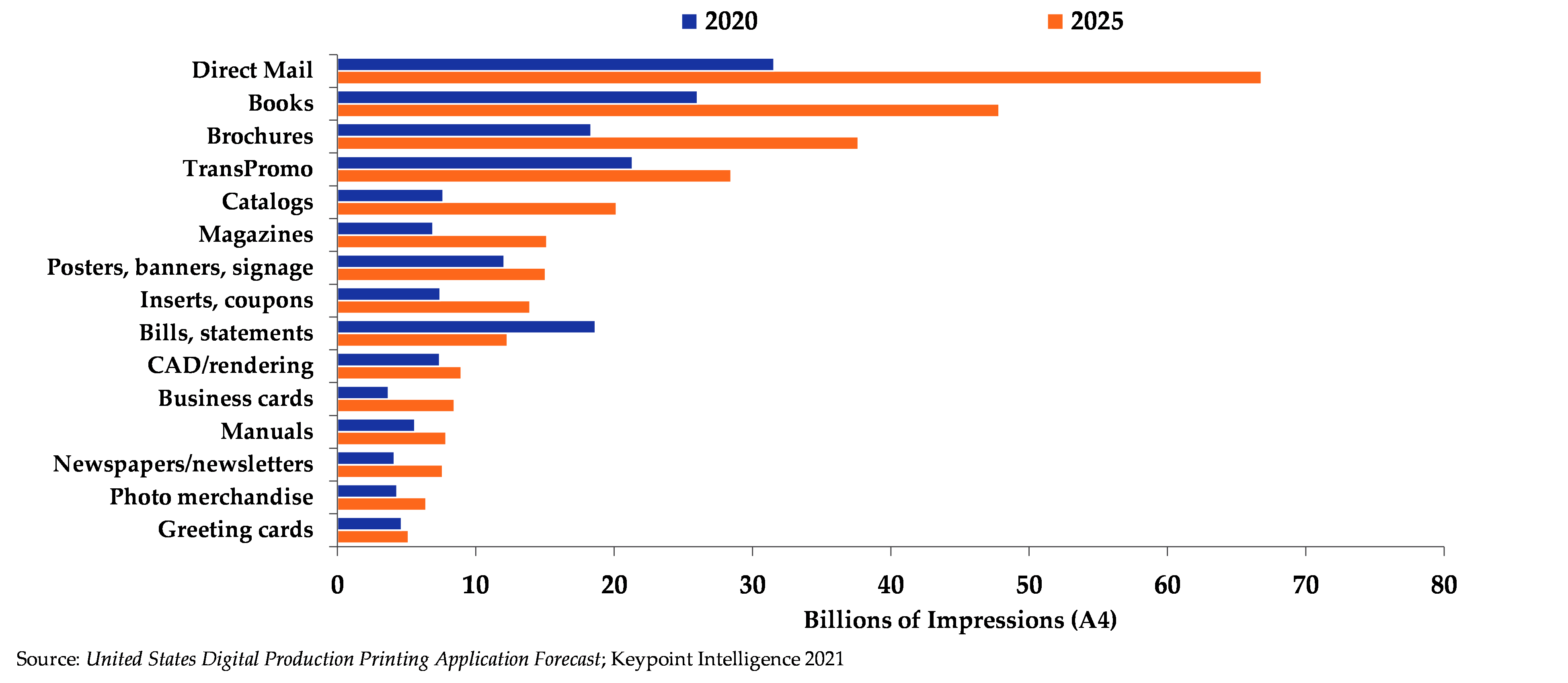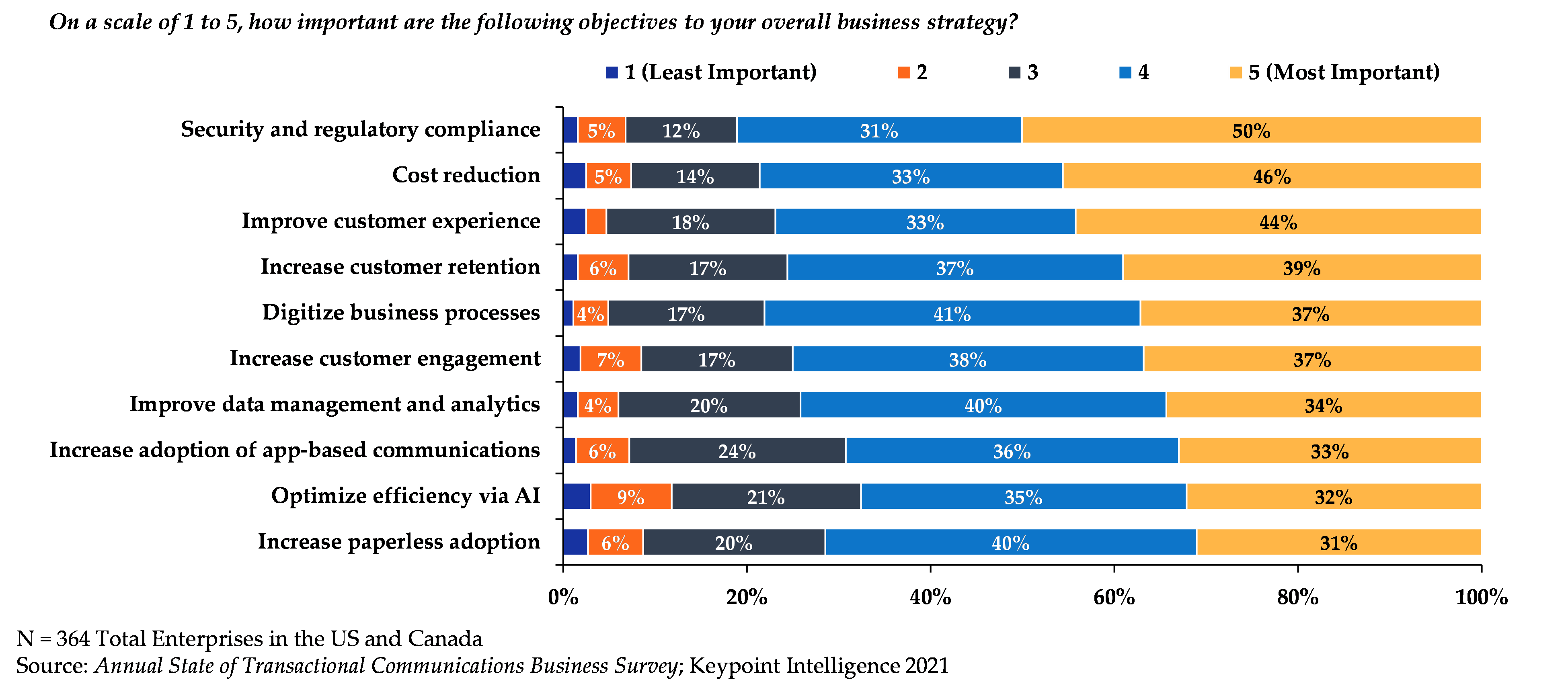Thanks in large part to the ongoing effects of the stubbornly persistent COVID-19 pandemic, modern businesses have changed more in the past 24 months than they had in the prior 18 years. Providers of print and mail solutions have been forced to consider a great deal of trial and error as they strive to keep their businesses running smoothly. J.R.R. Tolkien’s well-known phrase, “not all who wander are lost,” seems fitting in these unprecedented times — firms that are open to deviating away from the confines of a charted path will likely experience a better journey.
Of course, few people would deliberately select the road we’ve endured over the past two years. Digital technology was already waging war against business as usual, and, of course, we’ve had the matter of a global health crisis to contend with. On the bright side, providers of print & mail solutions now have an opportunity to take what they learned from a disoriented business climate and move forward with increased clarity and purpose. Purpose is an important and common thread as businesses strive toward future growth; it must now be at the center of every decision and customer interaction.
As our industry evolves, it has never been more critical for brands to have a purpose. According to a Harvard Business Review study, companies that focus on their purpose typically achieve higher growth rates and more success during transformative times. Nearly 90% of surveyed executives believed that a strong sense of collective purpose drives employee satisfaction. In addition, 84% asserted that a strong purpose could affect an organization’s ability to transform, and 80% believed that it helped increase customer loyalty.
This article explores the trends specific to marketing and direct mail that are expected to shape our industry as we move toward the future.
An Increased Focus on Applications
Applications drive print volume. If this seems like an obvious statement, that’s because it is… but it is still important! For print service providers (PSPs), the fastest path to new revenues will typically come from identifying print-prominent applications that are due an upgrade. Rather than focusing on print jobs, successful printing firms should seek applications that align with the digital print value proposition. Versioned, personalized, short run-lengths and interactive print that complements digital communication efforts can have a positive impact on the organization that owns them.
Each industry will have different names for various types of documents, so it’s nearly impossible to name every application in existence. For example, the same item that a software company would call a brochure might be called a look-book by a real estate broker. As a result, print sales professionals can better identify new opportunities by understanding who owns the application and the business purpose it serves. Keypoint Intelligence’s application forecast data provides a broad view of the applications that are expected to experience growth. As shown in Figure 1, every one of the top 15 digital print color applications has areas of additional opportunity.
Figure 1: Top Color Applications

The great news is that direct mail remains one of the largest print volume applications and is expected to continue seeing positive gains. In line with the need to maintain a strong brand, businesses must deliver high-impact print campaigns in versions that align their purpose with the interests of their intended audience.
When it comes to providing an optimal customer experience, the way in which a brand delivers its message matters. Research confirms that direct mail requires less cognitive effort to process than digital media, making it easier to understand and more memorable. Direct mail also offers significant advantages in terms of brand recall. Our brains process visual images 60,000 times faster than words, so powerful visuals can help drive engagement and improve response rates in direct mail.
As shown in Figure 1, catalogs and magazines are expected to experience some of the highest growth rates in terms of impressions between 2020 and 2025. Their strength in digital print can primarily be attributed to shifts away from traditional offset manufacturing. We already know that digital presses enable shorter run lengths, geo-marketing, and personalized messaging. Building on this knowledge, PSPs must translate these benefits into a language that marketers can relate to.
Sustainable and Viable Direct Mail
Enterprises of all sizes know that marketing is an essential business development activity. The onset of COVID-19 made all of us hyper-aware of changes in budgets and business operations. This means that brand owners must spend wisely and seek for new ways to connect with their best prospects in a meaningful way. Today’s marketers are expected to use tools and technologies that engage their audience members. Universal to all communication channels is the need to generate interest with prospective and current customers. As we navigate through 2022, brands must be more transparent about their position on sustainability, environmental concerns, social justice, and corporate governance. Because today’s marketers are often older than their intended audience, it’s critical to understand what is important to the younger generations apart from obvious factors like price and quality. Let’s look at a few purpose-driven initiatives that are important to today’s younger buyers.
Sustainability
According to The Deloitte Development study on 2022 Global Marketing Trends, certain age groups are more specific about purpose-driven purchasing criteria than others. One example suggests that 33% of consumers under the age of 26 view sustainability as a top buying decision.
Gen Z consumers (those born between 1997 and 2012) and Millennials (those born between 1981 and 1996) are especially concerned with global challenges. It has been argued that print is not a sustainable industry, but there are in fact many ways to align printed products with environmental improvements. PSPs are perfectly positioned to educate their audience and raise awareness of digital print’s value. Printing firms have much to gain from establishing sustainable practices. Legitimate efforts start within the print shop itself. If you don’t already have an eco-friendly strategy, consider establishing an environmental committee that oversees how energy is consumed, how deliveries are made, and how recyclable products are integrated into print production.
Plenty of PSPs took to renewable energy when the Forest Stewardship Council (FSC) became important in the early 2000s, so many PSPs are in fact FSC-certified. When this first became a practice, the conversation was on the print provider and the efforts made to earn that important stamp of approval. In many cases, the messaging of those efforts wasn’t translated to why a buyer should care. Sustainable standards extend beyond FSC certifications. So, consider today’s buyers, and establish your messaging to help them understand how digital print and direct mail can address environmental concerns. Sustainability isn’t a phase; it is surfacing as a prominent influence when selecting a product or service. Tell your story so it educates your best audience, and you can then help marketers tell their own stories.
Social Inequities
Younger print buyers expect brands to work toward positive change. Shared in the same Deloitte Development study mentioned earlier, younger consumers are generally more willing to patronize brands that commit to addressing social inequities. The concept of diversity, equity, and inclusion (DEI) must play a key role in a brand’s purpose. Inclusive marketing means that PSPs and marketers alike must reflect on the impact of their marketing messages—not just the intent. In the future, images and messages that represent a variety of identities and backgrounds will become even more important.
Digital print technology is the perfect solution for addressing this important need. The ability to change images and messaging in run lengths means that marketers can properly address the individuals they hope to include. Not taking the time to map marketing messages to the buyers’ social interests can mean the difference between onboarding new customers and watching once-loyal customers defect to brands that better speak their language. PSPs must address the social needs of today’s consumers. When done well, the solution will gracefully lead to digital print.
Corporate Governance
By design, the way in which a company conducts business establishes its reputation. Some corporations have historically focused on maximizing shareholder value, but today’s corporate governance involves balancing the interests of a company's many stakeholders in addition to focusing on customers, suppliers, and the community’s best interests.
Guiding principles that direct a brand’s behavior are more important now than ever before. After all, who wants to do business with a company that is only focused on its own profits? Marketers can establish a more loyal customer base by sharing information about how they conduct business. One of the best examples of corporate governance, transparency, and messaging is delivered by Lego. The following is a quote from its website:
“Our aim is to ensure the rights and well-being of everyone involved in making LEGO products and to protect the environment. We work in a transparent way with suppliers who share this ambition and commitment.”
Lego’s leading business principles include:
•Ethics: Transparency and integrity
•People: Employee rights and well-being
•Children: Child safeguarding and family-friendly workplaces
•Environment: Caring for the planet
So, what does this have to do with direct mail? Well, the primary purpose of direct mail is to create brand awareness and loyalty while encouraging current and potential customers to build a relationship with the brand. Going back to an earlier statement about purpose being at the center of every customer interaction, it’s important to recognize that today’s consumers have a keen interest in the company behind their purchase. PSPs are well-positioned to have insightful discussions with prospects and clients on how to consider the interest of today’s buyers. Today’s digital presses have been designed as an alternative to the long runs that were unable to customize marketing messages. It’s not about the features of digital printing; it’s about how you can help your clients address the interests of today’s buyers.
Transactional Printing in Customer Communications
In late 2021, Keypoint Intelligence conducted a survey of over 350 enterprises in North America. Half of enterprises cite security and regulatory compliance—which conveniently can be categorized under corporate governance—as a most important priority. As reflected in Figure 2 below, other important business objectives include reducing costs and improving the customer experience.
Figure 2: Importance of Business Objectives

The data above provides a handful of solid talking points for PSPs as they work to help customers examine their current practices. The insight gained from those conversations can help determine which improvements will achieve these important goals.
The Bottom Line
The past two years have introduced a great many changes to the way we live, work, and do business. As we move through 2022, we will undoubtedly face additional challenges and critical considerations. Supply chain challenges, labor concerns, and rising costs are on the minds of many, but these challenges can also mean exciting new opportunities! Capital investments are still occurring within our industry, and many firms are making investments to better address today’s ever-changing market needs. As a result, listening to the voice of the customer is more important than ever. Use the lessons that you’ve learned over the past two years to determine your focus and identify any changes that must be made to better serve your audience.
With the continued focus on the digital transformation, providers of print and mail solutions must shift the manner with which they describe their businesses, products, and services. Take the time to unapologetically define your company’s purpose. Articulate how your offerings complement today’s digital world and seek opportunities to build systems that will keep pace with the growth you want to achieve. Doing so can help guide the decisions that you’ll need to make as we navigate our businesses through another new year.
Karen Kimerer of Keypoint Intelligence has experienced the many challenges of expanding current market opportunities and securing new business. She has developed a systematic approach to these opportunities, addressing the unique requirements of becoming a leader in our changing industry. She is well-versed in 1:1 marketing, web-to-print, direct mail, book publishing, supply chain management, data segmentation, channel integration, and photo products.
This article originally appeared in the January/February, 2022 issue of Mailing Systems Technology.










